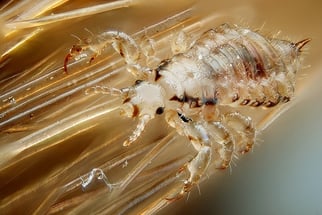Head lice are one of the most common health concerns affecting children across the United States every year. While lice do not pose any major health concerns other than infection from excessive scratching, outbreaks can be devastating to nonprofit, youth-focused, and community-based organizations. Lice outbreaks can cause facility closures and tarnish reputations due to the stigma that lice infestations are the result of unsanitary conditions, even though head lice can infect even the cleanest of people.
Head Lice Information
Listed below are some interesting facts and statistics about head lice and their life cycle.
- Head lice are between 2 and 3 mm long (the size of a sesame seed)
- Female louse typically live 3-4 weeks and lay 10 nits, or eggs, a day
- Lice cannot survive more than 24 hours away from a scalp, and nits cannot live more than a week if not kept at the same temperature as the scalp
- Lice can crawl 6 to 30 cm each minute and lay eggs the entire time
Head Lice Outbreak Prevention
Head lice are primarily spread through direct head-to-head contact. They can also be spread through sharing clothing or other belongings. The following tips are designed to prevent the spread of lice and to help control outbreaks if lice are discovered.
- Do not share combs, brushes, or towels. Anything that comes into contact with the hair and scalp should be dealt with carefully and properly sanitized. Anyone that handles used combs, brushes, or towels should do so carefully and avoid touching their own hair. Used towels should be washed with hot water and dried on the highest cycle.
- Avoid head-to-head contact during activities. If an infestation is discovered in group of children do not plan or allow the children to engage in any games, sports, or activities that will result in any head-to-head contact.
- Clean, vacuum, and sanitize any place a head may come in to contact with. Areas like mats, where people lay down to exercise, should be cleaned especially thoroughly. Also, any furniture where children would lay down should be given extra attention.
- Educate parents, children, and members about head lice and let them know about any outbreaks or infestations. They should be instructed on how to check for lice and to avoid contact if they are infected. They should also be taught that head lice can come from anywhere and are not necessarily indicative of a lack of cleanliness or hygiene.
Detecting Head Lice
Determining whether an individual is infected with head lice is relatively easy… check their scalp. If someone is suffering from an itchy scalp over an extended period of time, it is a good idea to check them for head lice. The best way to identify an infestation is to observe live nymph or adult lice. Finding nits (eggs) does not necessarily confirm an active infestation since they may indicate a past or inactive infestation. Regardless, if the symptoms exist, and live louse, nymphs, or nits are found, it is a good idea to treat the individual and begin screening for other cases.
Treating Head Lice
Since treating lice is safe, easy, and inexpensive it is recommended that anyone that may have come into contact with lice should be treated. It is also important for all members of an infected person’s household to get treated. Treating lice typically involves the application of a specially formulated shampoo and combing it through the hair.
- Apply over-the-counter lice medication, called pediculicide, according to the instructions found on the box.
- After treating the hair, comb hair thoroughly with a fine-tooth comb, usually provided with the medicine, to remove any remaining lice
- Have each infected person remove the clothing they were wearing before treatment and wash them thoroughly
- Identify and wash any clothing, linens, and towels the infected person may have come in contact with and wash and clean thoroughly
- Monitor the scalp of an infected person several days after treatment and repeat until no more lice are observed




